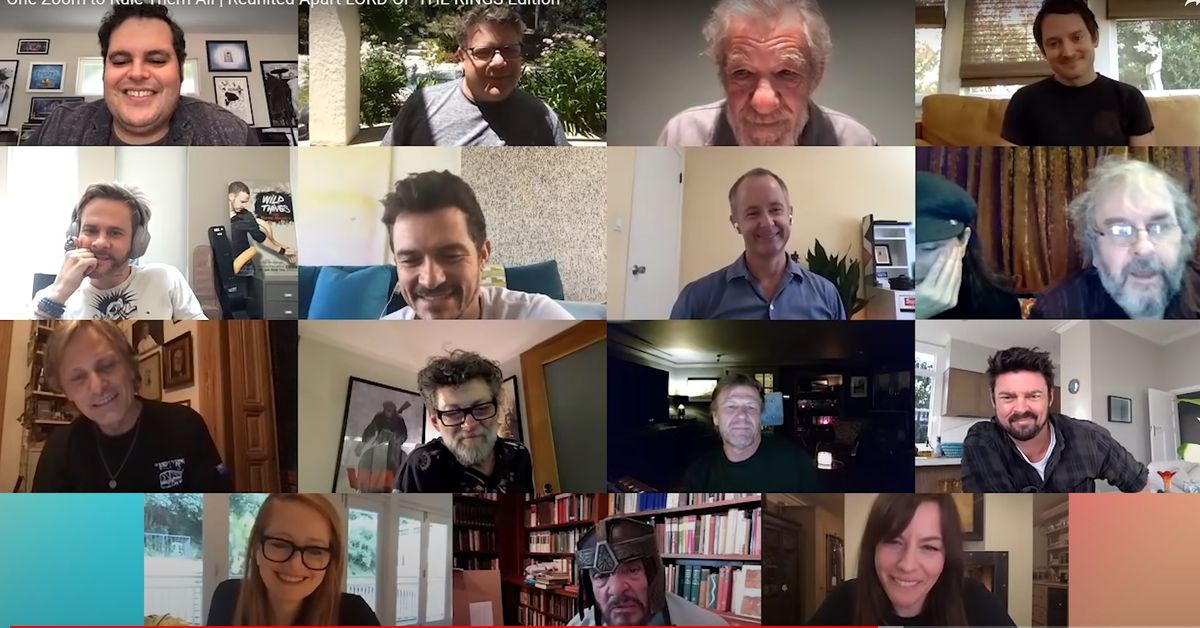How the pandemic inspired creative uses of technology in 2020 - 5 minutes read
 The year that brought us the coronavirus pandemic, murder hornets, and the deaths of Ruth Bader Ginsburg and Alex Trebek is probably one most people won’t be sad to bid adieu. Parents and kids were stuck together during lockdowns, trying to manage remote school and work, and everyone’s feeling good and frayed at this point.
The year that brought us the coronavirus pandemic, murder hornets, and the deaths of Ruth Bader Ginsburg and Alex Trebek is probably one most people won’t be sad to bid adieu. Parents and kids were stuck together during lockdowns, trying to manage remote school and work, and everyone’s feeling good and frayed at this point.At the start of the pandemic, media was abuzz with the notion that this pandemic and the resulting lockdowns would be a boon for the creative process. Suffering and isolation, the logic goes, beget great works of art and literature: just look at Shakespeare, who apparently cranked out Macbeth, King Lear, and Antony and Cleopatra while quarantined during an outbreak of bubonic plague.
While we may not yet know if another Shakespeare found their muse during the current pandemic, plenty of people found their creative spark thanks to technology, with librarians, artists, and even epidemiologists using the tools at hand not just to distract from the tedium of lockdown, but to put forth new approaches to how we learn and connect with each other.
The easy-to-use format of Google Forms allowed librarians and teachers to create problem-solving exercises for students designed as digital versions of escape rooms. In addition to solving the puzzle of the game, the escape rooms let kids hone their geography, math, and reading comprehension skills, and are built around fun themes that included Star Wars, Harry Potter, Jurassic World, and Marvel superheroes. Not only did they take away some of the tedium and chaos of online teaching and learning, but the virtual escape rooms were tools for staff development and community building. Brooke Windsor, a librarian in Ontario, put it this way: “We still want to sneak in that learning, broccoli-in-the-brownie style.”
As big weddings were (mostly) canceled and postponed in 2020, UK wedding photographer Tim Dunk decided he needed another project to keep his creative juices flowing. “I had to deal with the shock and financial implications of [the coronavirus] like any other photographer. It also threw up another challenge: how do we as creatives stay creative?” Dunk wrote.
His solution: FaceTime photo shoots. The photo subject and Dunk connect on FaceTime, and he determines where the light in their house is best for a portrait. Then, using the Live Photo button on the iPhone (sorry, Android users) that lets you take photos during a FaceTime call, he snaps the pictures, then edits them in Lightroom. And £10 from every shoot — he charges £50 for a set of 10 to 15 photos — goes to the Trussell Trust, a UK-based charitable organization that supports food banks. He’s also created photo books of some of the portraits taken during the project, and he penned a how-to for other photographers.
Okay, so not all of the movies in Gad’s Reunited Apart YouTube series are from the 1980s, but the casts of Ferris Bueller’s Day Off, Ghostbusters, Splash, The Goonies, and Back to the Future meeting on Zoom brought back the faces of some cultural touchstones of the American Gen-X childhood. Each episode benefits a different charitable organization and garners thousands, and in some cases, millions of views. The One Zoom to Rule Them All episode featuring the cast of the Lord of the Rings drew 5.7 million views and benefited nonprofit organization No Kid Hungry. “Everybody is going through the same craziness, trying to operate in a world that’s still very new and complicated, where our sole connection is through the internet,” Gad told The Guardian.
If any app is having a moment in 2020, it’s the ubiquitous TikTok — fighting the Trump administration in court and at the same time becoming the most-downloaded app in the world over the summer. Jacksonville, Florida science teacher Nancy Bullard created a Mrs. B TV on TikTok, dressing like everything from an astronaut to a chicken in the name of science. Bullard guides students through science experiments they can do without parental supervision, so parents working from home can have a bit of a reprieve. The response from students has been overwhelmingly positive, Bullard said. “Whether it is the latest dance trend or Fortnite, we have to find our kids on the platforms they’re comfortable with.”
During the coronavirus pandemic, National Institute of Allergy and Infectious Diseases (NIAID) director Anthony Fauci has become one of its most recognizable faces — and it’s an extremely expressive face that usually conveys what he’s thinking. Epidemiologist Karen Sautter Errichetti needed a way to check in with how her students were coping with... everything... and created an unscientific chart based on the five-part Likert scale, using photos of Fauci on a one to five scale (later expanded to a nine-photo scale) so students could choose their mood for that day. Photos of the NIAID director smiling were the most difficult to find, Errichetti noted.
Word is that Fauci himself has seen the scale, which is not quite the introduction Errichetti envisioned; she and her colleagues consider him a rock star of sorts. “Creating your own memes,” Errichetti told me, “that’s a little bit of your own kind of medicine.”
Source: The Verge
Powered by NewsAPI.org